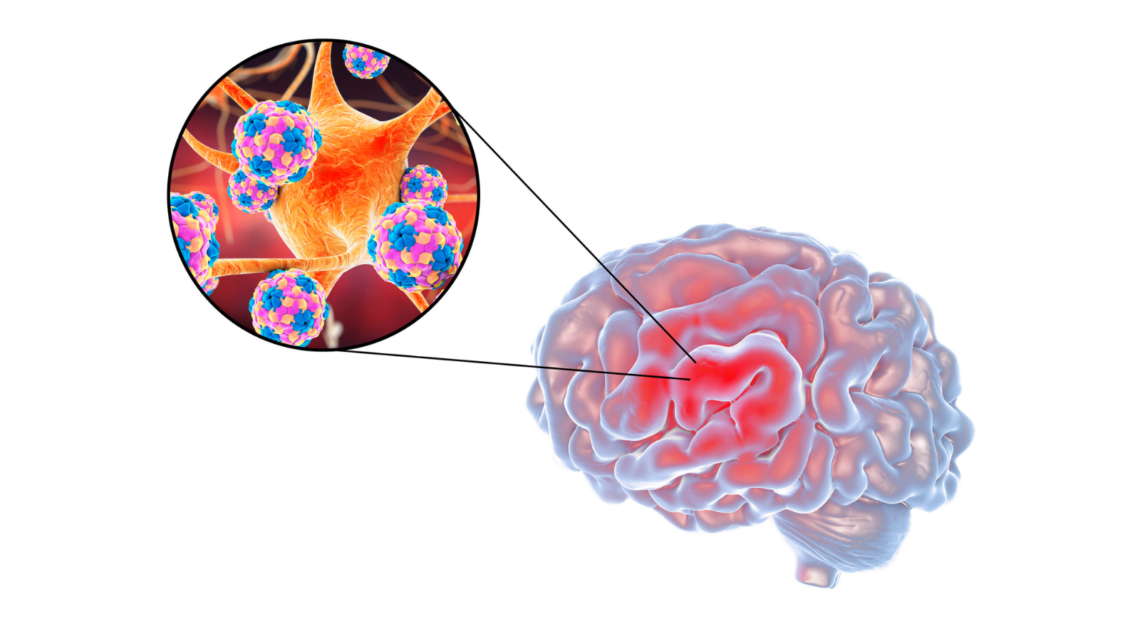-
Arthritis: Types, Symptoms, and Management
Arthritis is a medical term that represents a broad category of joint disorders. It involves inflammation of one or more joints, leading to pain and limited mobility. However, there is much more to arthritis than its common perception. In this article, we’ll explore the various types of arthritis, who can be affected, its symptoms, treatment options, and some important tips for managing this condition.
What is Arthritis?
Arthritis is a term that encompasses over 100 distinct types of joint disorders, each of which can affect individuals differently. The primary feature of arthritis is inflammation in the joints, which can cause pain, swelling, stiffness, and reduced joint mobility. While it is commonly associated with ageing, arthritis can affect individuals of all ages, including children and young adults.
Who Can Be Affected by Arthritis?
- Seniors: As people age, their joints naturally experience wear and tear, making them more susceptible to osteoarthritis, the most common form of arthritis.
- Adults: Rheumatoid arthritis, an autoimmune form of arthritis, often begins in adulthood. Additionally, gout, another type of arthritis caused by uric acid crystals in the joint, primarily affects middle-aged and older adults.
- Children and Young Adults: Juvenile idiopathic arthritis (JIA), formerly known as juvenile rheumatoid arthritis, is an autoimmune condition that affects children and adolescents. Furthermore, ankylosing spondylitis and lupus, both autoimmune disorders, often appear in early adulthood.
- Individuals with a Family History: Genetic factors play a role in some types of arthritis. If your family members have arthritis, you may have an increased risk of developing it as well.
- People with Previous Joint Injuries: Injuries to the joints, such as fractures or ligament damage, can increase the risk of developing osteoarthritis later in life.
- Individuals with Obesity: Excess body weight puts additional stress on weight-bearing joints, increasing the risk of osteoarthritis.
Symptoms of Arthritis
Arthritis symptoms can vary widely depending on the type of arthritis, the affected joint(s), and the severity of the condition. Common symptoms include:
- Joint Pain: This is the hallmark symptom of arthritis and may range from mild discomfort to severe pain.
- Stiffness: Arthritic joints often become stiff, particularly after long periods of inactivity.
- Swelling: Inflammation can cause swelling in and around the affected joint.
- Reduced Range of Motion: As arthritis progresses, it may become increasingly difficult to move the affected joint.
- Warmth and Redness: Some types of arthritis, such as rheumatoid arthritis and gout, can cause warmth and redness around the affected joint.
Diagnosis and Treatment
If you suspect you may have arthritis, consult your physician for a proper diagnosis. Diagnosis typically involves a physical examination, assessment of symptoms, and various tests such as blood tests, X-rays, or MRIs.
Treatment for arthritis depends on the specific type, the severity of symptoms, and the individual’s overall health. Treatment options may include:
- Pain Relievers: Over-the-counter pain relievers such as acetaminophen or nonsteroidal anti-inflammatory drugs (NSAIDs) can help manage arthritis pain.
- Disease-Modifying Antirheumatic Drugs (DMARDs): These medications are often prescribed for rheumatoid arthritis and other autoimmune forms of arthritis to slow the progression of the disease.
- Corticosteroids: These medications can help reduce inflammation and suppress the immune system in autoimmune forms of arthritis.
- Physical Therapy: Physical therapy can improve joint mobility, strengthen surrounding muscles, and reduce pain.
- Joint Injections: In some cases, injections of corticosteroids or hyaluronic acid may be used to provide relief.
- Surgery: In severe cases where other treatments are ineffective, joint replacement surgery may be recommended.
Tips for Managing Arthritis
- Maintain a Healthy Weight: Reducing excess body weight can lessen the strain on weight-bearing joints.
- Stay Active: Engage in low-impact exercises like swimming or cycling to keep joints mobile and strengthen supporting muscles.
- Eat a Balanced Diet: A diet rich in fruits, vegetables, whole grains, and lean proteins can help reduce inflammation.
- Get Enough Rest: Proper rest allows your body to recover and helps reduce inflammation.
- Use Assistive Devices: If necessary, canes, braces, or shoe inserts can provide added support and reduce strain on affected joints.
-
The Benefits of Meditation for Mental Health
In today’s fast-paced world, the pressures of daily life can often feel overwhelming. With the constant demands of work, relationships, and personal responsibilities, many people experience heightened levels of stress and anxiety. While modern medicine offers various treatments for these mental health issues, there has been a growing recognition of the value of alternative and complementary therapies, such as meditation. More than just a trendy wellness practice, meditation has deep roots in many ancient cultures, and its benefits for mental health, particularly in alleviating anxiety, are increasingly supported by scientific research. The practice of meditation offers a sanctuary of calm amidst the chaos of life, allowing individuals to reconnect with their inner selves, slow down their racing thoughts, and ultimately, cultivate a more balanced and peaceful mind.
At its core, meditation involves focused attention and heightened awareness, often through the use of techniques such as deep breathing, mindfulness, or the repetition of a calming mantra. This simple act of sitting quietly and observing one’s thoughts might seem deceptively easy, but it can have profound effects on mental well-being. In particular, meditation helps to calm the mind by reducing the activity of the amygdala, the part of the brain responsible for the ‘fight or flight’ response. By doing so, it helps to lower cortisol levels in the body, the hormone most associated with stress. Chronic stress and anxiety often go hand in hand, and when cortisol levels remain elevated for extended periods, they can wreak havoc on both mental and physical health. However, with regular meditation, these cortisol levels begin to decline, and individuals report feeling more in control of their emotional responses, even in stressful situations.
Anxiety disorders, which affect millions of people worldwide, are often characterized by excessive worry, fear, and a sense of dread. For those grappling with anxiety, their thoughts can spiral out of control, leading to physical symptoms such as a rapid heartbeat, shallow breathing, or even panic attacks. In many cases, anxiety can also be debilitating, making it difficult for individuals to perform everyday tasks, maintain relationships, or enjoy life. However, studies have shown that meditation can help mitigate these symptoms by promoting relaxation and encouraging a more present-focused mindset. Instead of becoming consumed by hypothetical scenarios or future uncertainties, those who meditate regularly learn to ground themselves in the present moment, which can reduce the grip that anxiety has on their lives.
One of the most widely studied forms of meditation for mental health is mindfulness meditation, which encourages individuals to observe their thoughts and feelings without judgment. This practice can be particularly beneficial for those with anxiety, as it helps to break the cycle of negative thinking patterns. Often, people with anxiety may become trapped in a loop of rumination, where they obsess over past mistakes or future worries, leading to increased stress and emotional distress. By practising mindfulness, individuals learn to recognize these thoughts as fleeting and temporary, rather than as absolute truths. This shift in perspective can create a sense of emotional distance from anxiety-provoking thoughts, allowing individuals to respond to them in a healthier and more constructive way.
In addition to its direct effects on the brain, meditation has a range of physiological benefits that can further improve mental health. For instance, deep breathing techniques often used in meditation help to activate the parasympathetic nervous system, which is responsible for the body’s ‘rest and digest’ functions. This system works in opposition to the sympathetic nervous system, which governs the stress response. By engaging the parasympathetic nervous system, meditation promotes relaxation, lowers blood pressure, and improves heart rate variability, all of which can have a positive impact on anxiety levels. Moreover, regular meditation practice has been linked to better sleep, which is crucial for maintaining mental health. Sleep disturbances, such as insomnia or restless sleep, are common among individuals with anxiety, and lack of sleep can exacerbate mental health conditions. However, by calming the mind and reducing stress before bedtime, meditation can improve sleep quality and help individuals wake up feeling more rested and refreshed.
Another notable benefit of meditation for mental health is its ability to enhance emotional resilience. Life is filled with challenges and setbacks, and those who suffer from anxiety may find it particularly difficult to cope with these obstacles. However, meditation teaches individuals to cultivate a sense of acceptance and non-reactivity towards difficult emotions. Rather than trying to suppress or avoid uncomfortable feelings, meditators learn to sit with their emotions, observing them with curiosity and compassion. This process can be transformative, as it allows individuals to develop greater emotional awareness and regulation. Over time, meditation helps to strengthen one’s capacity to handle stress and adversity, leading to increased emotional resilience and a reduced risk of developing chronic anxiety or depression.
It is also worth noting that the benefits of meditation are not limited to personal practice. Group meditation sessions, whether conducted in-person or online, can foster a sense of community and social connection, which are crucial elements for mental health. For individuals who feel isolated or overwhelmed by their anxiety, participating in a group meditation can provide much-needed support and a reminder that they are not alone in their struggles. Additionally, the shared energy and collective intention of a group meditation can deepen the experience and promote a greater sense of calm and well-being.
Despite the numerous benefits of meditation for mental health, it is important to acknowledge that meditation is not a one-size-fits-all solution. While many individuals find relief from anxiety through regular meditation practice, others may need to combine it with other treatments, such as therapy or medication. It is also essential to approach meditation with patience and consistency, as the benefits often take time to manifest. Some beginners may find it challenging to quiet their minds or may feel frustrated by the presence of intrusive thoughts during meditation. However, these experiences are normal, and with practice, individuals can learn to navigate these challenges and deepen their meditation practice.
-
Vitamin D Deficiency and Fall
Vitamin D, often referred to as the “sunshine vitamin,” plays a crucial role in numerous bodily functions. From maintaining strong bones and teeth to supporting immune function and muscle health, this essential nutrient is a cornerstone of overall well-being. However, as the days grow shorter and the sun’s rays become less intense, many Canadians find themselves at risk of not getting enough of this vital vitamin.
The relationship between the fall season and vitamin D deficiency in Canada is complex and multifaceted. It involves an interplay of geographical, environmental, and lifestyle factors that are unique to the Canadian context. To fully understand this relationship, we must first delve into the nature of vitamin D itself and its importance to human health.
Vitamin D is not a single compound, but rather a group of fat-soluble secosteroids responsible for enhancing intestinal absorption of several minerals, including calcium, magnesium, and phosphate. The two major forms relevant to human health are vitamin D2 (ergocalciferol), produced by plants and fungi in response to UV radiation, and vitamin D3 (cholecalciferol), synthesized in human skin when exposed to sunlight, specifically UVB radiation.
Both forms of vitamin D are biologically inert and must undergo two hydroxylation reactions in the body to become biologically active. The first occurs in the liver, converting vitamin D to 25-hydroxyvitamin D [25(OH)D], also known as calcidiol. The second occurs primarily in the kidney and forms the physiologically active 1,25-dihydroxyvitamin D [1,25(OH)2D], also known as calcitriol.
The most natural and efficient way for the body to obtain vitamin D is through skin exposure to sunlight. When UVB rays hit the skin, they interact with a form of cholesterol in the skin cells, triggering the production of vitamin D3. This process is so efficient that in ideal conditions, just 10-15 minutes of sun exposure can produce 10,000-25,000 International Units (IU) of vitamin D. However, the efficacy of this method is highly dependent on various factors including time of day, season, latitude, altitude, cloud cover, smog, sunscreen use, and skin pigmentation.
In Canada, particularly during the fall and winter months, the angle of the sun and reduced daylight hours significantly diminish the skin’s ability to produce vitamin D from sunlight. This is where the crux of the problem lies for many Canadians as autumn sets in. The sun’s position in the sky becomes lower, meaning that its rays travel through more of the Earth’s atmosphere before reaching the ground, filtering out more UVB radiation. Coupled with shorter days and often increased cloud cover, the opportunity for natural vitamin D production becomes severely limited.
While sunlight is the primary source of vitamin D, it can also be obtained through diet and supplements. Fatty fish like salmon, mackerel, and tuna are good natural sources, as are fish liver oils, egg yolks, and beef liver. In Canada, certain foods are fortified with vitamin D by law, including cow’s milk, margarine, and infant formula. Other foods, such as some brands of orange juice, yogurt, and plant-based milk alternatives, may be voluntarily fortified. However, relying solely on diet to meet vitamin D needs can be challenging, especially during the fall and winter months when natural production is limited. This is where supplements often come into play. Vitamin D supplements are available in two forms: D2 (ergocalciferol) and D3 (cholecalciferol), with most evidence suggesting that vitamin D3 is more effective at raising and maintaining vitamin D levels in the body.
The importance of maintaining adequate vitamin D levels becomes clear when we consider its myriad roles in human health. Perhaps its most well-known function is in bone health. Vitamin D is essential for the efficient absorption of calcium from the intestines. Without adequate vitamin D, the body can only absorb about 10-15% of dietary calcium. With sufficient vitamin D, this absorption rate increases to 30-40%. This enhanced calcium absorption, coupled with vitamin D’s role in depositing calcium and phosphate into the bone matrix, is crucial for building and maintaining strong bones. But the role of vitamin D extends far beyond bone health. Emerging research has highlighted its significant role in modulating the immune system. Vitamin D enhances the function of innate immune cells, including macrophages and monocytes, which form the body’s first line of defense against pathogens. It also influences T-cell and B-cell function, key components of the adaptive immune system, and stimulates the production of antimicrobial peptides in immune cells, enhancing the body’s ability to fight off bacterial and viral infections. This immune-modulating role of vitamin D becomes particularly relevant during the fall season in Canada, as it coincides with the onset of cold and flu season. The reduced ability to produce vitamin D naturally, combined with the increased prevalence of respiratory infections, creates a perfect storm that can leave many Canadians vulnerable to illness.
Vitamin D also plays a crucial role in muscle function and strength, which is particularly important for fall prevention, especially in older adults. It’s involved in the synthesis of muscle proteins, enhances neuromuscular communication, and particularly affects type II (fast-twitch) muscle fibres, which are important for quick, powerful movements. By improving muscle strength and neuromuscular function, adequate vitamin D levels contribute to better balance and coordination, reducing the risk of falls. This aspect of vitamin D function is especially relevant during the fall season when slippery conditions due to rain and fallen leaves can increase the risk of falls, particularly for older Canadians.
Research continues to uncover potential benefits of vitamin D in various other health conditions. Some studies suggest that it may help regulate blood pressure and maintain the health of blood vessels, potentially reducing the risk of heart disease. Vitamin D receptors are found in areas of the brain associated with depression, and some research has found a link between low vitamin D levels and increased risk of depression, particularly Seasonal Affective Disorder (SAD), which often onsets during the fall season.
There’s also emerging evidence suggesting a potential link between vitamin D levels and cognitive function, including a possible role in reducing the risk of dementia. Some studies have suggested that adequate vitamin D levels may be associated with a reduced risk of certain cancers, although more research is needed to fully understand this relationship. The immunomodulatory effects of vitamin D may also play a role in reducing the risk or severity of autoimmune diseases such as multiple sclerosis, rheumatoid arthritis, and type 1 diabetes.
Given the importance of vitamin D and the challenges in obtaining it during the Canadian fall, it’s crucial to understand the recommended daily intake. Health Canada and the Canadian Paediatric Society provide guidelines that vary based on age and life stage. For most adults, the recommended daily intake is 600 IU (15 mcg) per day, increasing to 800 IU (20 mcg) per day for adults over 70 years. However, some health experts argue that these recommendations may be too low, especially for Canadians living at northern latitudes or those with limited sun exposure.
The causes of vitamin D deficiency in Canada, particularly during the fall season, are multifaceted. Limited sun exposure is the primary culprit, with reduced daylight hours, lower sun angle, increased cloud cover, and cooler temperatures all contributing to decreased natural vitamin D production. Dietary insufficiency can also play a role, as few foods naturally contain significant amounts of vitamin D, and those that do may not be consumed regularly in many Canadian diets.
Certain medical conditions can also increase the risk of vitamin D deficiency. Malabsorption disorders such as inflammatory bowel diseases, celiac disease, and cystic fibrosis can reduce the intestine’s ability to absorb vitamin D. Liver diseases can impair the first step of vitamin D activation, while chronic kidney disease can affect the final activation step. Obesity is another risk factor, as vitamin D can become sequestered in body fat, reducing its availability in the bloodstream.
Age is also a significant factor in vitamin D deficiency risk. As we age, our skin becomes less efficient at producing vitamin D in response to sunlight. Older adults may also spend more time indoors and have dietary habits that don’t include many vitamin D-rich foods. This is particularly concerning given the importance of vitamin D for bone health and fall prevention in older adults.
Skin pigmentation is another factor to consider. Melanin, the pigment that gives skin its colour, acts as a natural sunscreen. While this provides important protection against skin damage and cancer, it also reduces the skin’s ability to produce vitamin D. As a result, individuals with darker skin may require more sun exposure to produce the same amount of vitamin D as those with lighter skin.
The implications of vitamin D deficiency can be far-reaching. In children, severe deficiency can lead to rickets, a condition characterized by soft, weak bones. In adults, vitamin D deficiency can contribute to osteomalacia, which causes bone pain and muscle weakness. It’s also associated with an increased risk of osteoporosis, particularly in older adults. Beyond bone health, vitamin D deficiency has been linked to an increased risk of respiratory infections, which is particularly relevant during the fall cold and flu season. Some studies have also associated low vitamin D levels with an increased risk of autoimmune diseases, certain cancers, cardiovascular disease, and depression.
Given these risks, it’s important for Canadians to be proactive about maintaining adequate vitamin D levels, especially as fall approaches. While the most natural way to get vitamin D is through sun exposure, this becomes challenging during the Canadian fall and winter. Therefore, many health professionals recommend a combination of dietary sources and supplements to ensure adequate intake. For example, consuming vitamin D-rich foods such as fatty fish, egg yolks, and fortified dairy products can help. However, for many people, especially those at high risk of deficiency, supplements may be necessary. The exact dosage should be determined in consultation with a healthcare provider, as individual needs can vary based on factors such as age, skin colour, latitude of residence, and overall health status.
It’s also worth noting that while vitamin D is crucial for health, it is possible to have too much of a good thing. Excessive intake of vitamin D supplements can lead to toxicity, causing symptoms such as nausea, vomiting, weakness, and in severe cases, kidney problems. This is why it’s important to follow recommended guidelines and consult with a healthcare provider before starting any supplement regimen.
For those who enjoy outdoor activities, making an effort to spend time outside during the middle of the day, when the sun is at its highest, can help maximize natural vitamin D production. Even on cloudy days, some UVB radiation can penetrate the clouds and stimulate vitamin D synthesis in the skin. However, it’s important to balance this with sun safety practices to prevent skin damage and reduce the risk of skin cancer.
-
Meningitis Risks, Signs, and Prevention
Meningitis is a serious and often life-altering infection that has the potential to strike anyone, anywhere, and at any time, regardless of age or location. This illness, which affects the membranes surrounding the brain and spinal cord, can lead to an array of severe symptoms and complications that highlight its devastating nature. Affecting over 2.5 million people worldwide each year, meningitis leaves a powerful impact on individuals and families alike, with fatal outcomes in approximately one out of every ten cases. The impact is especially heartbreaking in children under five, who account for nearly half of all meningitis-related deaths worldwide. Surviving meningitis often comes with its own challenges, as roughly one in five survivors live with long-term disabilities, such as hearing loss, brain damage, epilepsy, and even the need for limb amputation. Given the significant impact and the indiscriminate nature of this infection, understanding the symptoms, risk factors, and treatment options is essential for both awareness and prevention.
The symptoms of meningitis, while often mistaken for other ailments in the early stages, can progress rapidly, especially in individuals over the age of two. Common signs include a sudden high fever and stiffness in the neck, accompanied by a severe headache. Other indications might involve nausea, vomiting, and in some cases, confusion or difficulty concentrating. As the infection progresses, seizures, drowsiness, and heightened sensitivity to light can also arise, while appetite loss and, in certain cases like meningococcal meningitis, a skin rash may occur. Recognizing these symptoms is crucial, as early intervention can significantly improve outcomes, especially for bacterial meningitis, which is notably the most severe form of the illness.
In infants and newborns, meningitis symptoms can present differently, adding an additional layer of complexity for concerned parents and caregivers. High fever, continuous crying, and pronounced irritability are some of the first signs. An infected infant may also become notably sleepy, difficult to wake, or display sluggishness or inactivity. Additional signs may include a reluctance to eat or wake for feeding, poor feeding habits, vomiting, and, in some cases, a visible bulge in the soft spot atop the baby’s head. Newborns may also develop stiffness in their neck and body, and in many cases, attempts to console the child may only lead to more intense crying, particularly when the infant is held. This variation in symptoms across age groups underscores the need for parents and caregivers to be vigilant and to seek prompt medical advice when these symptoms appear.
Meningitis can be caused by several infectious agents, including viruses, bacteria, fungi, and parasites. While viral meningitis is the most common and often resolves with minimal medical intervention, bacterial meningitis presents a much more severe threat. Left untreated, bacterial meningitis can lead to death within a matter of days, and delayed treatment increases the likelihood of lasting brain damage. Unlike viral cases, bacterial meningitis demands immediate antibiotic treatment, making early diagnosis and intervention vital to prevent life-threatening complications. While some forms of meningitis improve with limited treatment, others require urgent medical intervention to prevent a rapid escalation of symptoms and potentially fatal outcomes.
Immediate medical care is imperative if there is any suspicion of meningitis, whether it is a family member, friend, or oneself. Early treatment, particularly for bacterial meningitis, can avert many of the infection’s most serious complications and reduce the chance of long-term effects.
-
Balanced Eating for Optimal Health
Having a healthy diet is something that we should always be focused on – because the healthier you eat, the better you will feel. As far as the benefits of good nutrition, there are many. For example, when you eat healthy, you can significantly reduce your risk of developing certain chronic diseases – including diabetes and even cancer. It’s also said that you can prevent both premature heart disease and diabetes by as much as 80% just by having a healthy diet and incorporating other healthy lifestyle factors into your daily routine, such as getting regular physical activity and avoiding bad habits, such as smoking and excessive alcohol consumption. Along with preventing chronic illness, good nutrition also promotes the growth and repair of your body and keeps your immune system healthy.
Of course, in order to reap all of these benefits, you will need to know how to properly build a balanced diet. There are many healthy eating patterns – some more so than others. Among some of the best diets in terms of keeping you living as healthy a life as possible are the Paleo, Mediterranean, and DASH diets. Healthy foods that are common in each of these diets include fresh fruits and vegetables, whole grains, beans and lentils, fish, poultry, nuts and seeds, milk, cheese, and yogurt, as well as healthy oils such as olive and canola. You should always avoid unhealthy foods and those that are highly processed, such as potato chips, cookies, cakes, and anything else that contains added sugar (including carbonated sodas and fruit juice.) These unhealthy food products are not only linked to weight gain and obesity, but they can also cause your blood sugar levels to spike and increase your LDL levels – otherwise known as the “bad” cholesterol. If you happen to have an underlying health condition, such as high blood pressure, then there are also specific (and sometimes considered surprising) foods that you should avoid, including tomato products, deli meats, frozen foods (such as pizza), pickles, and canned soup. If you’re diabetic, you should also follow a healthy eating plan by having a diet that is naturally rich in nutrients while lower in fats, calories, carbohydrates and sugar. You should also ensure you’re eating three well-balanced meals per day, and make sure that those meals are no more than 6 hours apart.
If you find yourself too busy to put in the effort of eating a well-balanced, healthy diet, you’re not alone. As many as 30% of Canadians say they feel that they don’t have enough time to put together meals for themselves and will often skip their meals as a result while instead focusing on snacks. Unfortunately, snacking isn’t enough to provide you the fuel (or nutrients) you need in order to stay energized throughout the day. Skipping meals is also one of the easiest ways that you can fall into unhealthy eating patterns. To avoid this (and to avoid any added stress), it’s recommended that you plan your meals ahead of time (in some cases, as far as a week in advance) and keep a variety of healthy snack foods on hand for when you find yourself craving something. It’s also important to pay attention to portion sizes when snacking. We will often grab our snacks by the handful out of large boxes or bags – but instead of doing this, take a small portion and put it on a plate or in a bowl. Watching television, surfing the web, or even driving are also ways to fall into unhealthy eating habits. This is known as distracted eating, and you are much more likely to eat more than you should when you do this – so always be mindful. As for which snacks are considered the healthiest, the best are ones that are high in protein and fibre. Examples include raw vegetables (such as carrots or peppers) with hummus, whole grain toast with peanut or almond butter, apple slices, and Greek yogurt mixed with berries.
If you’re someone who tends to eat while on the go, try changing your routine so that you are having sit-down meals with your family, as there is evidence to suggest that those who do have meals together are much more likely to eat healthier. In addition, research also shows that children and teenagers who eat with their family are likely to have better performance at school (such as improved grades), and are also less likely to smoke, use drugs, or drink alcohol.
-
Boosting Bone Health with Key Nutrients
Nutrients play an important role in our overall health. They provide us with energy (via carbs, fats, and proteins), help regulate body functions (i.e. temperature, sweating, thyroid function, blood pressure, and metabolism), and are also essential for body structures – including the maintenance of tissues, organs, teeth, and bones.
Many of the nutrients that we need come from the foods we eat, including calcium, which is critical for bone health. As the body does not make calcium on its own, the only way we can get it is from our diets or by taking a calcium supplement. However, in order for our bodies to be able to absorb calcium, we also need vitamin D. While vitamin D is not naturally found in very many foods, you can get it from consuming fatty fish (such as tuna or salmon), and, of course, by taking a vitamin D supplement. When it is ingested through foods or supplements, vitamin D is absorbed by the intestines and is then carried to the liver from the bloodstream. From there, it turns into something known as calcidiol; while when in the kidneys, it gets transformed into a biologically active form known as calcitriol.
In addition to foods and supplements, vitamin D is also manufactured by the skin when we have been in direct sunlight. However, because of the risk of things like sun burns and skin cancer, it’s not recommended that you purposefully sit out in the sun for prolonged periods of time; and, if you are going to be out in the sun, you should always be wearing an SPF to keep your skin safe.
Along with calcium and vitamin D, there are other nutrients that play their own important roles in the health of our bones, including vitamin K, magnesium, fluoride, and omega-3 fatty acids.
• Vitamin K: Supports the mineralization of bones
• Magnesium: Supports the structural component of bones
• Fluoride: Supports the structural component of bones
• Omega-3 fatty acids: Reduces inflammation associated with osteoblastsWhen it comes to finding the best foods for our bone health, there are many. Dairy products, for example, tend to provide the body with the most calcium per serving size. Examples of good dairy products to include in your diet and increase your calcium intake include:
• Milk
• Yogurt
• CheeseExamples of other calcium-rich foods also include things like:
• Green, leafy vegetables
• Nuts
• Tofu
• Sardines
• ShrimpExamples of magnesium-rich foods:
• Beans
• Lentils
• Chickpeas
• Seeds
• Whole grainsExamples of foods that naturally contain fluoride:
• Spinach
• Grapes
• Raisins
• Black teaExamples of foods rich in omega-3 fatty acids:
• Salmon
• Oysters
• Flax seeds
• Chia seeds
• WalnutsOverall, maintaining a well-balanced diet with these essential nutrients is key to promoting strong bones and overall health. Pairing calcium-rich foods with vitamin D, as well as incorporating other bone-supporting nutrients like magnesium, vitamin K, fluoride, and omega-3 fatty acids, ensures that the body has everything it needs for optimal bone health. It’s important to focus on variety and moderation in your diet, as each nutrient works in harmony with the others. A well-rounded approach to nutrition is essential for lifelong bone health, and making informed choices today will pay off in the years to come.
-
Preparing for Cold & Flu Season
Flu season typically runs from November through April; however, outbreaks can happen as early as October and last as late as May, and results in the hospitalization of as many as 12,000 Canadians every year. While most individuals will recover from the flu without needing to seek any kind of urgent medical attention, there are certain individuals who are at increased risk of developing serious flu-related complications such as pneumonia, bronchitis, or even sinus and ear infections. High-risk individuals include seniors over the age of 65, those under the age of 65 with a previously diagnosed chronic condition, those with weakened immune systems, children under the age of 5, pregnant women, and healthcare providers such as nurses and doctors.
Influenza is a highly contagious respiratory illness that affects the lungs, throat and nose, and can easily be passed from person to person. Those suffering from the flu can experience a wide range of symptoms including a sudden onset of cough or fever, fatigue, sore throat, runny nose, headache, nausea, vomiting, diarrhea, a decreased appetite, and overall body aches. All of these symptoms can be severe, whereas symptoms of the common cold are usually mild in comparison.
It is also important to remember that COVID-19 remains a significant concern and continues to coexist with seasonal illnesses such as the flu and the common cold. COVID-19 shares many of the same symptoms with both cold and flu viruses, including fever, cough, fatigue, sore throat, and body aches, which can make it challenging to differentiate between these illnesses without testing. In particular, loss of taste or smell, which is a hallmark of COVID-19, may not always be present, and other overlapping symptoms such as difficulty breathing, headaches, and gastrointestinal issues may occur in all three illnesses. Given this overlap, it is crucial to take appropriate precautions, including getting tested if symptoms arise, isolating when necessary, and following public health guidelines.
For high-risk individuals and those with underlying conditions, the combination of flu and COVID-19 can be particularly dangerous. Co-infection with both viruses is possible, and healthcare systems may face additional strain during the colder months when both viruses circulate more actively. Therefore, it’s important to be vigilant about vaccination, not only against the flu but also against COVID-19. Keeping up with booster doses of the COVID-19 vaccine can offer added protection, especially as new variants continue to emerge.
Because of the similar symptoms between flu, COVID-19, and other respiratory viruses, it is essential to monitor your health closely during flu season and seek medical attention if symptoms worsen or fail to improve. Both vaccines and general preventative measures, such as wearing masks in crowded places, frequent handwashing, and maintaining good respiratory hygiene, remain important tools in reducing the spread of both viruses.
Flu strains also change from year to year; thus, the National Advisory Committee on Immunization (NACI) recommends anyone over the age of 6 months be vaccinated against the flu each year. The flu vaccine works by creating antibodies that provide protection against and subdue strains of influenza. It is important to note that it typically takes up to 2 weeks for the antibodies to form and the flu shot to take full effect, therefore if you are exposed to the flu within that time frame you may still be at risk of developing the flu. If you have an egg allergy or are allergic to any of the ingredients found in the flu vaccination such as gelatin, you should avoid getting a flu vaccine and take alternative preventative measures against the flu. Garlic works well to boost the immune system and is known for its antibacterial properties, in addition to other nutrient-dense foods such as carrots, squash, broccoli, and kale, and proteins such as skinless chicken, turkey and beef. Regular exercise (2.5 hours each week) is also beneficial in playing a key role against developing illness.
-
Inherited Retinal Diseases
Inherited retinal diseases (IRDs) are a group of eye disorders that lead to progressive vision loss, often resulting in severe impairment or blindness. Characterised by photoreceptor degeneration or dysfunction, these conditions affect the retina—the light-sensitive tissue at the back of the eye essential for vision. IRDs are both clinically and genetically heterogeneous, meaning they vary widely in symptoms, severity, and genetic causes. Disease onset can range from birth (congenital) to late adulthood, impacting individuals across all age groups.
What Are Inherited Retinal Diseases?
IRDs encompass a spectrum of disorders caused by genetic mutations that affect the retina’s function. The retina contains photoreceptor cells—rods and cones—that convert light into electrical signals sent to the brain. In IRDs, these photoreceptors degenerate or malfunction, leading to vision loss. Examples of IRDs include retinitis pigmentosa, Leber congenital amaurosis, Stargardt disease, and cone-rod dystrophy.
Causes and Genetics of IRDs
The genetic heterogeneity of IRDs means that mutations in different genes can cause similar retinal problems. Over 260 genes have been associated with these diseases. IRDs are inherited in various patterns:
- Autosomal Dominant: A single copy of the mutated gene from one parent can cause the disease.
- Autosomal Recessive: Two copies of the mutated gene, one from each parent, are necessary for the disease to manifest.
- X-Linked: The mutated gene is located on the X chromosome, affecting males more severely.
- Mitochondrial Inheritance: Mutations in mitochondrial DNA passed from the mother can lead to retinal diseases.
Genetic mutations lead to the production of defective proteins crucial for photoreceptor function, resulting in cell degeneration.
Symptoms and Onset
Symptoms of IRDs vary depending on the specific disease and may include:
- Night Blindness: Difficulty seeing in low-light conditions.
- Tunnel Vision: Loss of peripheral vision.
- Loss of Central Vision: Difficulty with detailed tasks like reading.
- Photophobia: Sensitivity to light.
- Colour Vision Deficiency: Trouble distinguishing colours.
The onset of symptoms can be:
- Congenital: Present at birth or early infancy, as seen in Leber congenital amaurosis.
- Childhood or Adolescence: Symptoms may appear during developmental years.
- Adulthood: Late-onset IRDs can manifest symptoms in middle age or later.
Diagnosis
Early and accurate diagnosis of IRDs is crucial for management and potential treatment. Diagnostic methods include:
- Comprehensive Eye Examination: Assessing visual acuity, field of vision, and retinal health.
- Electroretinography (ERG): Measuring electrical responses of photoreceptor cells.
- Optical Coherence Tomography (OCT): Imaging retinal layers to detect abnormalities.
- Genetic Testing: Identifying specific genetic mutations to confirm the type of IRD and inform family planning.
Treatment and Management
Currently, there is no cure for most IRDs, but treatments aim to slow progression and manage symptoms:
- Gene Therapy: Luxturna (voretigene neparvovec) is an approved gene therapy for RPE65 mutation-associated retinal dystrophy.
- Vitamin A Supplementation: May slow progression in some forms of retinitis pigmentosa.
- Low Vision Aids: Devices and training to maximise remaining vision.
- Clinical Trials: Ongoing research into stem cell therapy, optogenetics, and neuroprotective agents offers hope for future treatments.
References
-
Fad Diets: A Risky Shortcut
When it comes to losing weight, the most effective and sustainable approach is changing your overall eating habits, not just looking for a quick fix. However, many people fall into the trap of fad diets, often because these diets promise fast and dramatic results. While it may be tempting to try a diet that promises rapid weight loss, the reality is that fad diets can be incredibly harmful to your health and rarely lead to long-term success.
What Are Fad Diets?
Fad diets are eating plans that typically become popular through media, social media influencers, or celebrity endorsements. They often claim to deliver rapid weight loss with minimal effort, sometimes with exaggerated promises like losing 10 pounds in a week. These diets tend to focus on severely restricting calories or eliminating entire food groups, which can have serious consequences for your health. Some examples of fad diets include the 3-Day Diet, the Soup Diet, the Apple Cider Vinegar Diet, and the Grapefruit Diet. Many of these diets have gained popularity despite lacking scientific backing.
The key issue with fad diets is that they are not sustainable. While you may initially see weight loss, much of it is likely due to water loss or muscle breakdown rather than fat loss. Moreover, because fad diets are difficult to maintain, people often regain any weight they lose—and sometimes even more. This yo-yo effect can harm your metabolism, making it even harder to lose weight in the future.
Common Red Flags of Fad Diets
It’s important to recognize the red flags that signal a diet might be a fad rather than a healthy, balanced eating plan. Some warning signs include:
- Extreme Calorie Restriction: If the diet asks you to consume fewer than 1,200 calories per day, it’s likely unhealthy. Extreme calorie restriction can slow down your metabolism, making it harder to maintain weight loss.
- Elimination of Entire Food Groups: Many fad diets cut out essential food groups like carbohydrates, fats, or even proteins. These nutrients are critical for your body to function properly.
- Promises of Rapid Weight Loss: Any diet that claims you can lose more than 1–2 pounds per week is unrealistic and potentially dangerous. Sustainable weight loss is slow and steady, allowing your body to adjust.
- Relying on Supplements or Pills: Diets that require you to take supplements, powders, or pills are a major red flag. Healthy eating habits should focus on whole foods that provide the necessary nutrients.
- Lack of Scientific Backing: Many fad diets are promoted based on testimonials or unverified expert opinions rather than solid scientific research. If a diet doesn’t have scientific evidence to support its claims, it’s best to steer clear.
Health Risks Associated with Fad Diets
Because fad diets often cut out essential nutrients, they can cause a variety of short- and long-term health issues. Some of the most common health risks include:
- Nutrient Deficiencies: When you eliminate entire food groups, you risk missing out on vital nutrients like vitamins, minerals, and fibre. For example, low-carb diets may lack essential carbohydrates that your body needs for energy, while low-fat diets might deprive you of healthy fats that support brain function and hormone regulation.
- Loss of Muscle Mass: Many fad diets focus solely on cutting calories, which can lead to a loss of muscle instead of fat. Muscle is critical for maintaining a healthy metabolism and overall strength.
- Dehydration: Rapid weight loss diets often lead to dehydration, as your body sheds water weight rather than fat. Dehydration can cause dizziness, headaches, and fatigue, among other symptoms.
- Digestive Issues: Extreme changes to your diet, such as cutting out fibre-rich foods like fruits, vegetables, and whole grains, can lead to digestive problems like constipation or bloating.
- Heart Health Risks: Some fad diets, especially those high in saturated fats (like the keto diet), can increase cholesterol levels and put you at greater risk for heart disease.
- Mental Health Impact: Constantly restricting your diet and focusing on weight loss can take a toll on your mental well-being. People who follow fad diets may experience mood swings, irritability, and a sense of failure when they inevitably regain the weight.
Why Fad Diets Fail in the Long Term
The allure of quick results is hard to resist, but the truth is that fad diets fail in the long term for several reasons. One of the main problems is that they are not sustainable. Most people find it difficult to maintain the extreme restrictions imposed by these diets, and once they return to their normal eating habits, the weight comes back—often with additional pounds.
Moreover, fad diets do not teach people how to adopt healthy, balanced eating habits. They focus on short-term results rather than long-term lifestyle changes. In contrast, a sustainable approach to weight loss involves learning how to make healthier food choices, practising portion control, and incorporating physical activity into your daily routine.
The psychological effects of fad dieting are also worth noting. Constantly cycling between dieting and weight gain can lead to feelings of frustration, guilt, and even depression. It can also distort your relationship with food, turning eating into a stressful experience rather than a nourishing one.
A Balanced Approach to Healthy Eating
Rather than turning to fad diets, the best approach to weight loss and overall health is a balanced, nutrient-rich diet that includes all the essential food groups. Basic dietary guidelines suggest that you should aim to eat a variety of foods, including:
- Fresh fruits and vegetables: These are packed with vitamins, minerals, and antioxidants that help support your immune system and overall health. Aim for a colourful variety to ensure you’re getting a range of nutrients.
- Whole grains: Foods like brown rice, quinoa, oats, and whole wheat bread provide complex carbohydrates and fibre, which are essential for energy and digestive health.
- Proteins: Include lean proteins such as chicken, fish, beans, and legumes. Protein helps build and repair tissues, and it’s vital for muscle maintenance.
- Healthy fats: Incorporate sources of healthy fats like avocados, nuts, seeds, and olive oil. These fats support brain function and help absorb certain vitamins.
- Dairy or dairy alternatives: Milk, yogurt, and cheese provide calcium and vitamin D, which are important for bone health. If you’re lactose intolerant, opt for fortified plant-based alternatives.
- Hydration: Drinking water is essential for nearly every bodily function, including digestion and temperature regulation. Make water your primary beverage, and limit sugary drinks and alcohol.
How to Make Sustainable Dietary Changes
Making long-term changes to your diet can seem overwhelming at first, but the key is to start small and make gradual adjustments. Here are some tips to help you get started:
- Set Realistic Goals: Instead of aiming for quick weight loss, focus on achievable goals, like adding more vegetables to your meals or reducing your intake of processed foods.
- Focus on Whole Foods: Try to base your meals around whole, unprocessed foods rather than relying on packaged or convenience foods.
- Practice Portion Control: You don’t have to eliminate your favourite foods, but be mindful of portion sizes. This allows you to enjoy a variety of foods without overindulging.
- Incorporate Physical Activity: Exercise is a crucial part of any healthy lifestyle. Find activities you enjoy, whether it’s walking, swimming, or cycling, and make them a regular part of your routine.
- Seek Professional Guidance: If you’re unsure about which dietary changes are best for you, consult a healthcare provider, dietitian, or nutritionist. They can help tailor a plan that meets your needs and goals.
Making changes to your eating habits can be challenging at first, but once you establish a routine of healthy eating, it becomes much easier to sustain. Ultimately, you’ll feel better both physically and mentally in the long run.
-
Finding Relief from Indigestion
Indigestion – also known as dyspepsia – is very common and can happen to anyone. It is described as persistent discomfort and burning in the upper abdomen and is most commonly caused as a result of certain eating habits (from the types of foods you eat to how quickly you consume your food, as well as if you lay down too quickly after eating.) It can also be triggered by chronic digestive problems.
Below you’ll find information some of the most common symptoms that are associated with indigestion, the risk of developing other health issues as a result of indigestion (or the different types of health issues that can occur as a result of indigestion), as well as tips on what you can do for temporary relief.
As mentioned, one of the most common reasons why someone might develop indigestion is due to their eating habits. Foods that are known to cause indigestion and other related symptoms, such as heartburn, include those that are fried, greasy, onions, garlic, black pepper, tomatoes, chocolate, peppermint, citrus fruits, and spices. Certain kinds of beverages such as fruit juice, coffee (and other caffeinated drinks), alcohol (red wine, in particular), as well as soda and tea can all lead to indigestion. Aside from food and beverages, indigestion can also be caused from certain lifestyle habits, such as if you’re a smoker, or may even be the result of certain medications (especially anti-inflammatory drugs like ibuprofen.) When you have indigestion, you may also experience stomach pain and bloating, feel full during meals and/or won’t be able to finish a full meal, feeling as if your stomach is in knots or as if it’s “gnawing” at you, as well as gas and belching. These symptoms can also be caused by conditions such as acid reflux disease or GERD (gastroesophageal reflux disease), peptic ulcers (sometimes cause by H. pylori bacteria), abnormalities with the pancreatic or bile ducts, and gastric cancer.
While indigestion is usually easily diagnosed, your physician may need to refer you for a special test called an upper gastrointestinal (GI) endoscopy. An endoscopy is performed by inserting a small tube with a camera through your esophagus and into your stomach so that your doctor can have a better look at your digestive tract and its lining, determine whether or not any diseases may be present, as well as collect tissue samples if they deem it necessary. This test is done under mild sedation and can be helpful in diagnosing other conditions like reflux esophagitis, ulcers, different inflammatory diseases, as well as certain cancers. You may also need to go for an additional test, such as a barium swallow, if you have symptoms of GERD or other problems with food digestion, such as swallowing.
If no other gastrointestinal issues are found on any of these tests, then indigestion is usually easy to treat by taking over-the-counter antacids, which can be taken before or after meals. In some cases, these over-the-counter antacids will not be strong enough to combat your symptoms and physicians like Dr. Ghahary will need to prescribe patients something stronger. Examples of prescribed medications to treat indigestion and GERD include H2RAs (H2 receptor antagonists), PPIs (proton pump inhibitors), and Prokinetics. H2Rs help to reduce stomach acid, as do PPIs (though they are considered to be stronger than H2Rs), while Prokinetics help to improve the motility of the digestive tract. Keep in mind that while it is uncommon, these medications can cause side effects in some individuals, which may include nausea and vomiting, constipation or diarrhea, headache, dizziness, rash or itchy skin, abdominal pain, depression, anxiety, and fatigue. If you notice any of these side effects or find that the medications are not helping your symptoms in any way, be sure to address this with your prescribing physician so that they can determine whether or not they need to switch you to a different medication.









